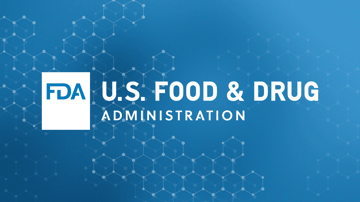 Guest blogger Julie McGill, Vice President of Supply Chain Strategy and Insights, shares insights leading up to the release of the Final Rule for FSMA 204. Click here to read the previous blog.
Guest blogger Julie McGill, Vice President of Supply Chain Strategy and Insights, shares insights leading up to the release of the Final Rule for FSMA 204. Click here to read the previous blog.
What do you need to know about the FDA’s Food Traceability Rule? Probably more than you realize. Learn how this legislation applies to food safety and traceability programs.
This regulation signals a major milestone for the FDA’s New Era of Smarter Food Safety initiative to accelerate transparency and tech-enabled innovation in the food industry.
Learn what steps you can take today to ensure your company is prepared to navigate evolving regulations, industry guidelines, and your trading partner’s traceability program requirements.
Defining Traceability
In FSMA 204, the FDA is focused on the ability to track foods at every step of the supply chain. This regulation is currently limited to certain foods and theproposed rule would create a first-of-its-kind standardized approach to traceability recordkeeping, paving the way for the industry to adopt and leverage more digital, tech-enabled traceability systems both in the near term and the future.
While the proposed requirements would only apply to foods on the Food Traceability List, it was designed to be suitable for all FDA-regulated food products, and they encourage the voluntary adoption of these practices industry-wide.
The Food Traceability List
The requirements set forth by FSMA section 204 will apply to designated “high-risk foods” named in the Food Traceability List (FTL). Food products on this list, as well as products containing ingredients named on the list, are subject to enhanced traceability requirements unless explicitly exempted. The proposed list includes:
- Cheeses, other than hard cheeses
- Shell eggs
- Nut butter
- Cucumbers
- Herbs (fresh)
- Leafy greens, including fresh-cut leafy greens
- Melons
- Peppers
- Sprouts
- Tomatoes
- Tropical tree fruits
- Fruits and vegetables (fresh-cut)
- Finfish, including smoked finfish; except does not include Siluriformes fish, such as catfish
- Crustaceans: Includes all crustacean species, such as shrimp, crab, lobster, and crayfish
- Mollusks, bivalves
- Ready-to-eat deli salads
Critical Tracking Events and Key Data Elements
Critical Tracking Events (CTEs) define the events or activities occurring in food supply chains where information must be captured to enable traceability. The pieces of information required for each CTE are called Key Data Elements (KDEs) and may include information such as time, product identifiers, location, lot codes, quantities, business identification information, and more.
| The proposed rule identifies the following CTEs:
|
|
|
Compliance Dates
FSMA Rule 204 will go into effect in January 2023, 60 days after the final rule is published in November 2022. The proposed rule gives companies a period of two years to implement, so you would have until January 2025 to become fully compliant.
Implementing Traceability
While the FDA’s proposed timelines are meant to be reasonable, the process can be long and involved, when moving from manual systems to digital, tech-enabled systems. Preparing for the proposed rule requires focus, discipline, and the right team.
Reach out to our leading industry experts on the FoodLogiQ team if you are interested in learning more about FSMA compliance and FoodLogiQ Track + Trace.
FSMA 204 Compliance Consultation today
Other posts you might be interested in
View All Posts
Industry Regulations
5 min read
| November 7, 2022
FSMA 204: The Road to Enhanced Traceability
Read More
Traceability
6 min read
| January 29, 2021
Gearing up for Traceability 2.0 with FSMA
Read More
Food Industry
16 min read
| December 8, 2023

